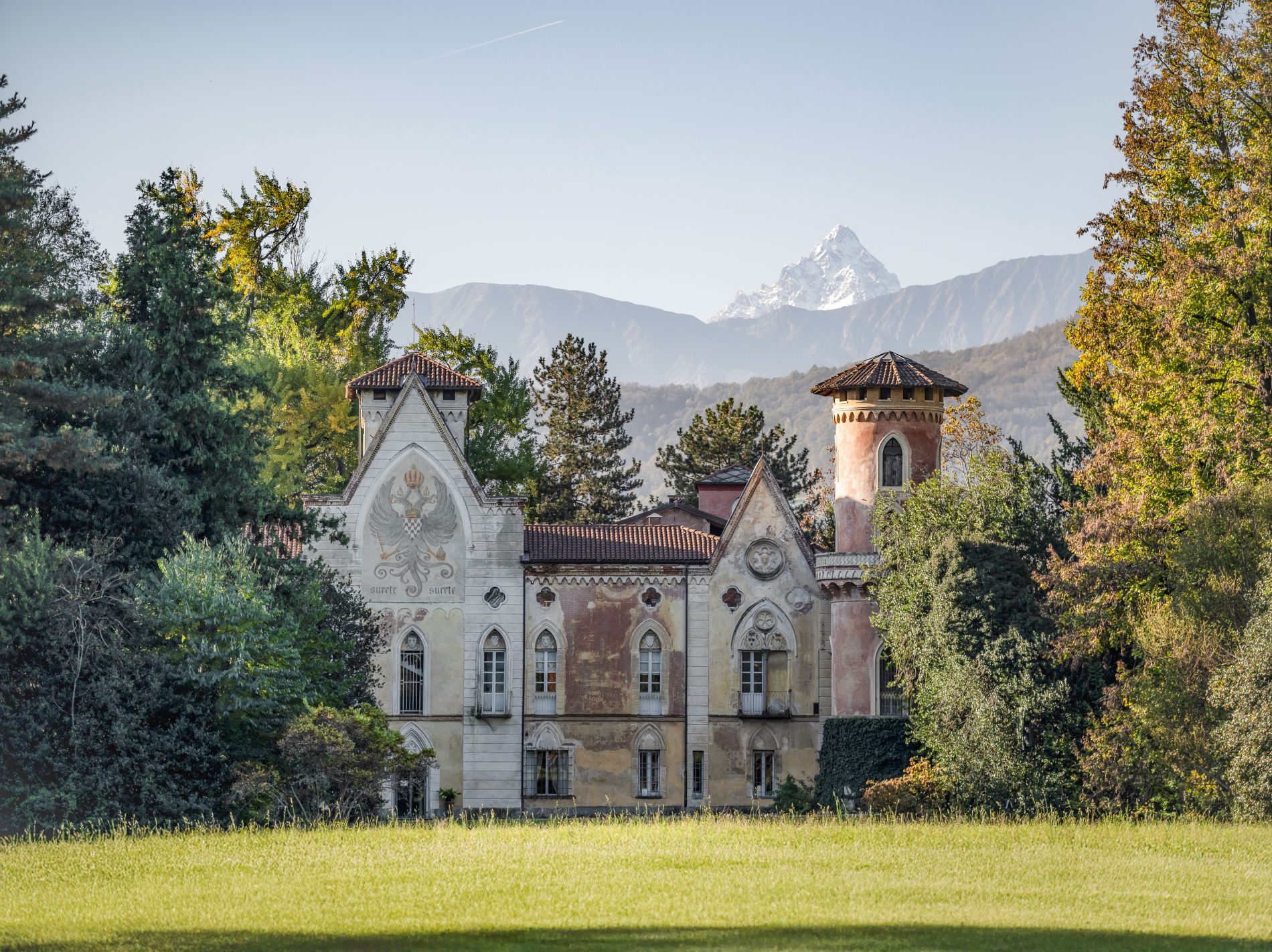La Corte Nobile, su cui si affaccia l’attuale ingresso del Castello, nel Settecento era un giardino formale o “all’italiana”. Come suggeriva la moda dell’epoca, si trovavano un giardino di delizie e un parterre costituito da aiuole simmetriche decorate da ricami vegetali di piccole siepi piantate a disegno.
Il restauro del 2024 è stato ispirato da un dipinto anonimo e non datato, riconducibile stilisticamente a fine Settecento, che raffigurava quest’area come un giardino a partizione regolare, in stile rinascimentale, tra vasi e aiuole fiorite, nel tempo perduti. Per questo oggi ritroviamo, lungo la facciata d’ingresso le
Hydrangea arborescens ‘Annabelle’ e, ai piedi dell’altra, i vasi in terracotta rosa, in cui crescono la salvia e la limonaria.
Un esemplare monumentale di Ginkgo biloba delimita una radura in cui, un tempo, sorgeva un piccolo lago, circondato da meravigliosi esemplari di Taxodium distichum o Tassodio, detti anche Cipressi calvi. Quest’albero è una firma distintiva dei giardini progettati da Xavier Kurten, il grande paesaggista prussiano, autore, tra gli altri, del Parco del Castello Reale di Racconigi.
In the eighteenth century, the Noble Courtyard, where the current entrance to the castle is located, was the site of a formal garden, arranged in the “Italian style.” In keeping with fashion of the era, there was a garden of delights and a parterre with a symmetrical arrangement of flower beds hedged by small ornamental plants to create a geometric design.
Restoration work in 2024 was modeled on an anonymous, undated painting, stylistically traceable to the late eighteenth century. It depicts this area as a Renaissance-style garden divided harmonically by large pots and flower beds, since lost. Taking inspiration from that picture, along the facade of the entrance today we find Hydrangea arborescens, or Annabelle hydrangeas, and terracotta pots planted with sage and lemon beebrush along the adjacent facade.
A monumental Ginkgo biloba marks out a clearing where there was once a pond, encircled by marvelous specimens of Taxodium distichum, more commonly known as the bald cypress. The ginkgo was a signature piece of the gardens designed by the great Prussian landscape architect Xavier Kurten, who also gave us the Royal Park of Racconigi Castle.
Video
Sul tuo smartphone usa due dita per muovere e zoomare la mappa.


